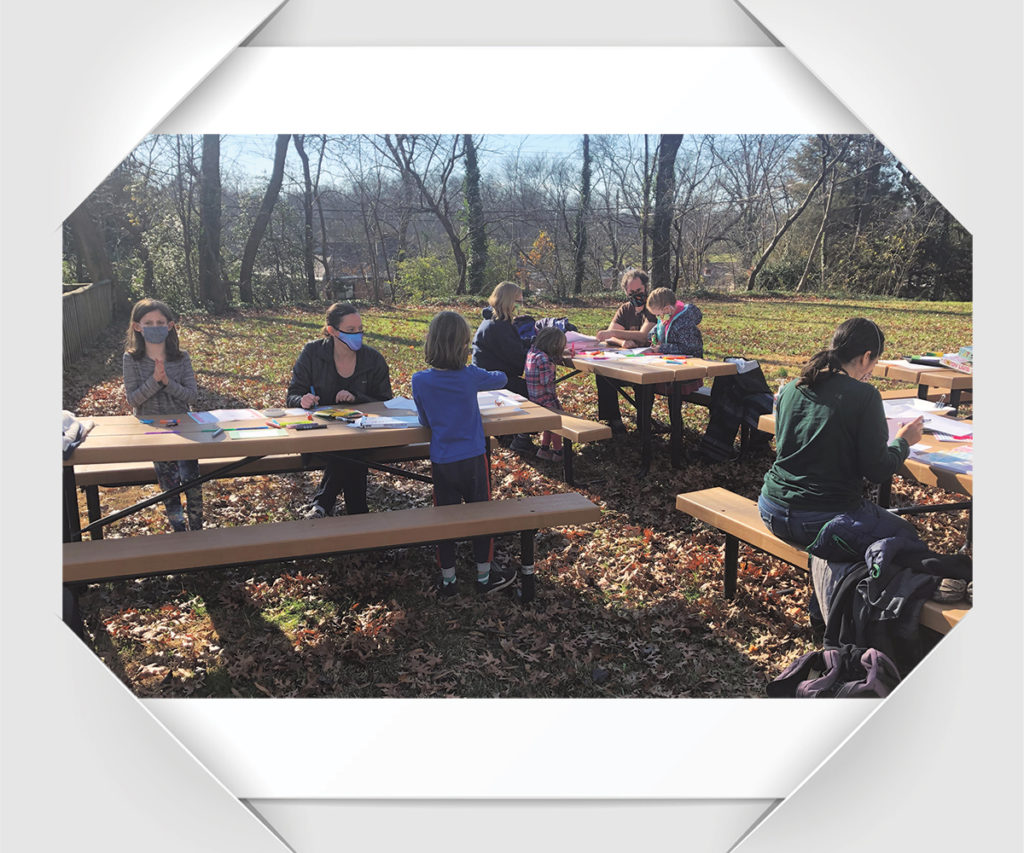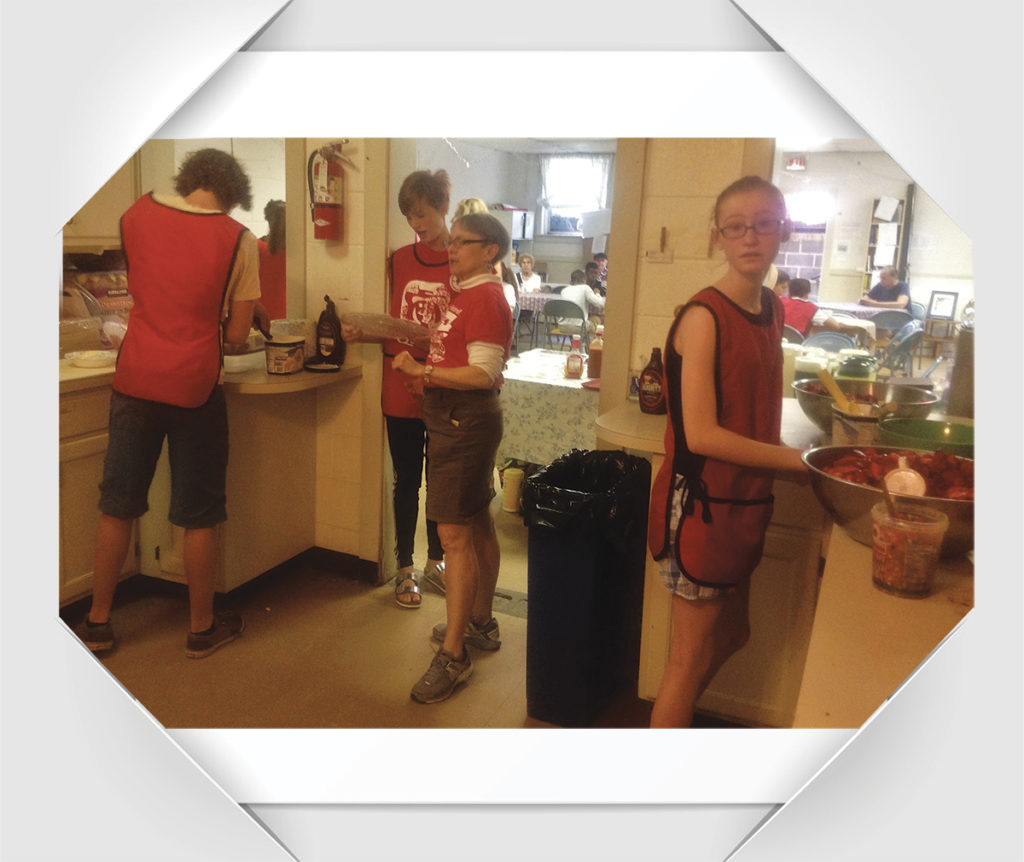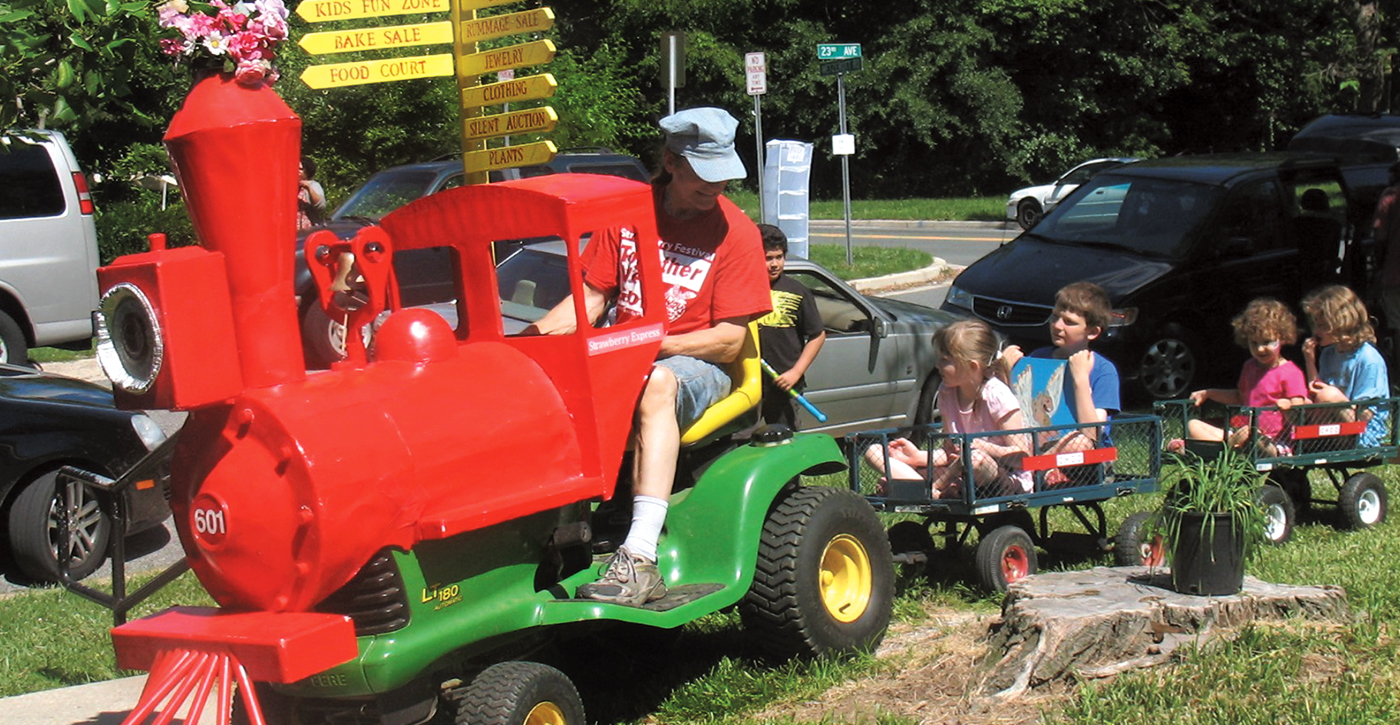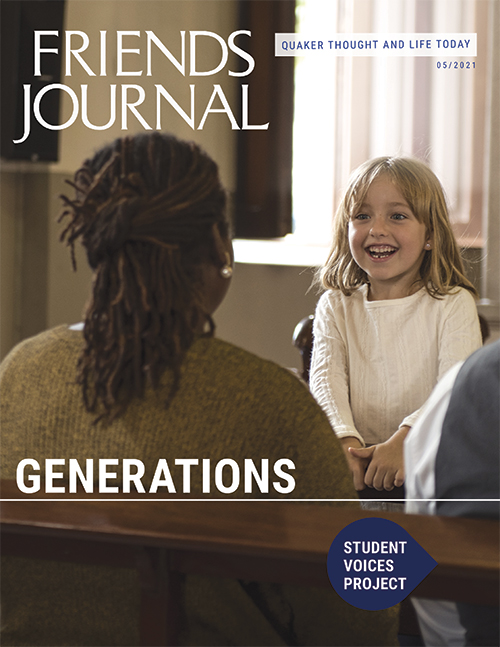Before ever attending a Quaker meeting for worship, I, Sharon, visited Sabbathday Lake Shaker Village in New Gloucester, Maine. My husband and I were on vacation in the early 1980s and drove past it. I thought it was a museum. We stopped, and I went on the two-hour guided tour. My husband chose to go into the gift shop, where he had a long conversation with Sister Mildred, one of the few surviving Shakers. She invited us to come for worship the next day.
There were perhaps seven or eight Shakers and a mix of paid staff, volunteers, and visitors. There were fewer than 30 altogether. We met in the beautiful blue-and-white meetinghouse. The worship began with a short reading from Brother Ted, followed by silence with the occasional message. A baby, brought by a visitor, was making noise; visitors exchanged glances, and the mother took the baby out. Wonderful hymns were sung with much gusto and foot stamping. Immediately after, a few of the Shaker sisters rushed out to find the visitor. They were thrilled to see a baby and told her they wished she and the baby had stayed.
When I decided a few years later that I needed a faith community, I searched and found the nearest two Quaker meetings. Living in Silver Spring, Maryland, we had many choices. I called both Adelphi and Bethesda Meetings. Only Bethesda answered the phone, so I went there, thinking I would go every week for a year; if offered anything further, I would continue. That year, Baltimore Yearly Meeting (BYM) planned a yearly-meeting-wide spiritual formation program, so I went.

First-day school continues outside, during the COVID-19 pandemic. Photo by Robert Duncan.
We met at Stony Run Meeting in Baltimore once a month and met in small groups in between. It was wonderful to meet seasoned older Friends and learn how they “let their lives speak.” The following year, the BYM program met at Adelphi Meeting, and a few of us from Bethesda went again for remedial spiritual formation.
During one of my first regular meetings for worship at Adelphi, as we rose after meeting, I was shocked to find a hand on the back of my leg, under my skirt. I whipped around and saw no one, then looked down and saw a small toddler swinging along confidently through the sea of adult legs. What fearless children they have here! I was smitten.
Noise from children in the first 20 minutes of worship (or from those who stayed the whole hour) upset no one. Once, while making eye contact with a very young Friend, I saw her put her finger to her lips in the classic shushing gesture. At nine months old or so, Toby had unmistakably eldered me. I was amused and suitably chastened.
On another occasion, a very small girl was carrying on a subdued but fractious conversation with her father. He finally rose and said, “Anna would like us all to sing ‘Magic Penny.’” We did and Anna beamed. We were all happy.
When a request for volunteers for the First-day school program went out, I volunteered for the three- to five-year-old group. I enjoyed it immensely and learned. Someone suggested making bird feeders. This entailed spreading peanut butter (pre-peanut allergy concerns!) on pine cones and then rolling them in birdseed: messy but very satisfying! We also did art projects. One young artist came every week dressed in vivid color-coordinated outfits, which her mother told us she insisted on choosing for herself. She stood out. When we used carved potatoes to make stamp art, she carefully colored the entire background of her picture in blue before adding the figures on top. While making paper plate masks, she laughed, “Too big!” Then picked up the scissors and cut the plate down to the size of her face.
We read books. Molly Bang’s wordless, plot-driven The Grey Lady and the Strawberry Snatcher was a favorite. Asked how to solve the dilemma of what should be done with the strawberries, one child suggested the grey lady could sit down and eat them all herself. True. I hadn’t thought of that. Loving oneself is essential. (In the book, the grey lady takes the strawberries home and shares them with her family, and the strawberry snatcher finds blackberries; no one goes hungry.) When asked, the volunteer teachers and rotating parent helpers agreed that our goal for our age group was to show and share love. In more traditional religious education terms, we covered the two great commandments at a beginner level.
The meeting kindly sent me to Pendle Hill study center in Wallingford, Pennsylvania, for a weekend workshop on religious education; I drove up and back with fellow meeting member Rob Duncan. In a small group, we shared the size of our programs: “Nine to twelve children,” I said, “depending on the week.” “Yes,” said others. Then I realized my mistake: others were talking about their entire Friends meeting programs; I was talking about one classroom. So many children! We have five classrooms plus the nursery.
An increase in number will not come only from the outward appearance of our meetinghouses and better signage. More of a difference will be made by focusing on fidelity to our values, our work in the world, and most fundamentally, our work with our children and other people’s children.
How did Adelphi achieve such a vibrant First-day school program? One reason is the dedicated volunteers, who return again and again,helping to create a community in which children are valued, listened to, engaged, asked for their help, and appreciated for offering it. I asked Robert Duncan for his observations.
The size of the program is a valuable attribute for the greater meeting community. The large number of children means there are enough peers in one’s kindergarten and first-grade class that they may make friends to revisit every First Day until graduating from high school. The presence of these children also stands out to a family with young children attending for the first time: they tend to come back.
Retaining young peoples’ participation through the high school years has been a strength of the program. A First-day school classroom in the third-floor attic room with mattresses and old furniture provides a climate that facilitates honesty and trust between the teens and the teachers. The attic gathering is also a non-school, non-home, no-parents-allowed experience that tides them over between the all-important, annual BYM Young Friends Conferences. Adelphi’s investment in service grants further strengthens our young Friends’ commitment to Quakerism. We granted funding for a young Friend to run a basketball camp on an Indigenous reservation and another young Friend to organize a service trip to rural Argentina; both were life-shaping experiences for the young participants.
Loving and committed parents in the meeting who have experienced raising their own children become helpful and friendly mentors to other parents’ children. (Once a Friend with temporarily reduced mobility told her child at Friends General Conference to go to the cafeteria for lunch “and sit with anyone from Adelphi.”)

Volunteers in the Strawberry Festival Cafe. Photo by Robert Duncan.
Over 30 years ago, the meeting started an entire school, Friends Community School (FCS), under the care of the meeting. Originally located on the meetinghouse grounds, it started as a K–6 elementary school. Jane Manring, a Quaker and noted progressive educator, led the school in its early years. Now located on its own campus, FCS serves children K–8. Families coming to Adelphi Meeting through the school are another source of our abundant First-day school program.
Now with the COVID-19 pandemic, we are meeting mainly through Zoom. Our meetinghouse renovation project has been delayed, and we, as with other Friends and so many others, are struggling. We see fewer children. They miss gathering together, and so the Religious Education Committee has resumed in-person, outdoor activities for them. These activities are equally nourishing to the parents, who must balance jobs; children’s school requirements; and everyone’s daily needs, all in one home. It provides them with a break and a chance to commiserate with other parents.
When Adelphi’s Friends Committee on National Legislation advocacy group met with our U.S. Representative Jamie Raskin in November after the election, he said he thought there were two or three million Friends in the United States given all we do. He added that he had looked us up, and there are only 60,000 or so in North America (there are actually a little over 80,000 in the latest estimates from Friends World Committee for Consultation). “I wish there were more of you.” So do I; perhaps we all do.
But an increase in number will not come only from the outward appearance of our meetinghouses and better signage (much as these factors can help). More of a difference will be made by focusing on fidelity to our values, our work in the world, and most fundamentally, our work with our children and other people’s children. It is these that will save us as a faith community.




Comments on Friendsjournal.org may be used in the Forum of the print magazine and may be edited for length and clarity.